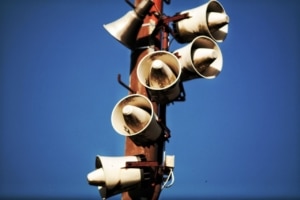With the direct Connection from a loudspeaker to an amplifier, a relatively large current flows in the cable, a few amperes, so you need large cable cross-sections and short cables. If you want to connect several loudspeakers in parallel to an amplifier, then the currents are multiplied and overload the amplifier, so this is possible up to a maximum of two 8-Ohm-Loudspeakers to an amplifier with 4 ohm connection option.

It's more for background watering in terms of quality and performance, not one HiFi-Moderate playback at the original volume. At 100 V you will hardly connect high-end hi-fi loudspeakers, but in principle any loudspeaker can be used.
If you z. For example, if you use a 100 watt amplifier, you can drive 10 loudspeakers with 10 watts each, or 1 loudspeaker with 50 watts and 5 with 10 watts each, in any combination, as long as the total power of the amplifier should not be exceeded.
If you z. B. wants to connect 10 speakers to an amplifier with 100 watts, then the speakers themselves can also z. B. be specified with 50/70 watts, but then they only get 10 watts and can not be turned up to full volume.
- Loudspeakers are often installed in the ceiling and are practically invisible.
- Each speaker may or may not have its own volume control.
- The demands on the cables are much lower than when connecting directly to an amplifier.
- You can use an amplifier of 100 watts e.g. B. operate ten speakers.
- There are special ELA amplifiers that already have a 100V output, but almost all hi-fi amplifiers can also be used as ELA amplifiers.
- There are also loudspeakers with built-in transformers.
- The transformers are usually single-channel, as are the volume controls. At stereo you would need everything twice or as a stereo version.
- In principle, each speaker can be equipped with its own volume control that does not affect the volume of the other speakers.
- The individual parts such as transformers and volume controls are mostly for installation and look accordingly, ie without a housing.
|
Addition from www.e-plan.josefscholz.de:
“Take a converter and connect a loop of 1,5mm insulated copper wire to the low-voltage side. The hearing-impaired with appropriate hearing aids can already follow the event in meeting places.
|
